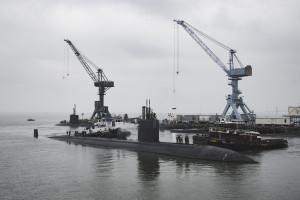
The final defense appropriations bill includes a provision requiring the Secretary of the Navy to create a maintenance delay report for naval warships after years of delays going back to the Obama administration. The bill report notes that while completing maintenance on time is “integral to supporting fleet readiness, meeting strategic and operational requirements, and ensuring the Navy’s ships reach their expected service lives,” several reports show the Navy still faces continuous maintenance delays that affect its efforts and threaten…

 By
By 











